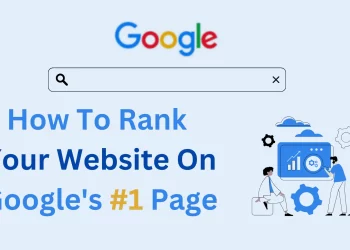Maintaining your website is a critical ongoing task that ensures your digital presence remains secure, functional, and optimized. To keep your website in good health, regularly update your content management system (CMS), themes, and plugins to close security vulnerabilities and improve performance. Conduct routine backups to safeguard your data, and implement strong website security measures such as SSL encryption, malware scans, and firewalls. Monitoring and fixing broken links, optimizing images, and enhancing page load speed are essential for providing a smooth user experience and improving your site’s SEO performance. It’s also important to review your website’s content periodically to keep it accurate, relevant, and engaging for visitors. Additionally, check for mobile responsiveness and compatibility across browsers to ensure a consistent experience for all users. Finally, analyze your website’s traffic and user behavior using tools like Google Analytics to identify areas for improvement and make data-driven decisions. By performing these tasks consistently, you can maintain a professional, high-performing, and trustworthy website.
What Is Website Maintenance?
Website maintenance involves the ongoing process of checking your website for issues and errors, and keeping it updated, secure, and relevant. It’s not a one-time task, but a consistent part of managing a professional online presence.
1. Technical Maintenance
- Software & Plugin Updates: Platforms like WordPress, Joomla, or Magento often release security updates and performance improvements.
- Security Monitoring: Installing firewalls, using SSL certificates, and scanning for malware help protect both your data and user trust.
- Hosting and Domain Renewal: Expired domains or lapsed hosting accounts can cause website downtime, hurting credibility and SEO.
2. SEO Maintenance
- Crawl Error Fixes: Tools like Google Search Console highlight broken links, indexing issues, or server errors.
- Meta Tag Optimization: Regularly refining titles, meta descriptions, and schema markup improves visibility in SERPs.
- Keyword Updates: As trends shift, your content should evolve with new target keywords and topics.
- Keyword Updates: As trends shift, your content should evolve with new target keywords and topics.
3. Performance and Speed Optimization
- Page Load Speed Checks: Use tools like Google PageSpeed Insights or GTmetrix to identify bottlenecks.
- Image Compression: Large images slow down your site. Optimizing them improves speed and user experience.
- Caching and CDN: These reduce server load and improve load times, especially for global audiences.
4. User Experience (UX) and Design
- Mobile Responsiveness: With mobile-first indexing, ensuring your site looks and functions well on phones and tablets is critical.
- Broken Links and Forms: Dead links or malfunctioning forms frustrate users and harm credibility.
- Navigation Testing: Streamlined navigation helps visitors find what they need faster.
5. Content Review & Refresh
- Outdated Information: Update service details, team bios, pricing, or policies to maintain accuracy.
- Blog Updates: Refresh older blog posts with current data, new insights, and internal links to keep them relevant.
- Visual Content: Swap outdated images, banners, or videos to reflect your current brand and offerings.
6. Analytics & Conversion Tracking
- Check Google Analytics & Tag Manager: Ensure your data layers, goals, and events are all firing correctly.
- Review Bounce Rates & Session Durations: High bounce rates can signal usability or content relevance issues.
7. Backup and Recovery Plan
- Regular Backups: Daily or weekly backups can protect your content and database in case of failure or cyberattack.
- Disaster Recovery Testing: Know how to restore your site quickly with minimal data loss.
How to Maintain Your Website: A Step-by-Step Guide
1. Update Core Software and Plugins
- Keep your CMS (like WordPress, Joomla, or Drupal) up to date.
- Regularly update themes and plugins to the latest versions.
- Remove unused or outdated plugins to reduce vulnerabilities.
2. Monitor Website Security
- Install and configure a security plugin or firewall.
- Set up automatic malware scans.
- Use SSL certificates (HTTPS) to encrypt user data.
- Enable two-factor authentication for logins.
3. Backup Your Website Regularly
- Use automated tools to back up files and databases.
- Store backups in multiple locations (e.g., cloud + local).
- Test recovery processes periodically.
4. Optimize Speed and Performance
- Compress and optimize images.
- Enable caching and use a Content Delivery Network (CDN).
- Minify CSS, JS, and HTML files.
5. Fix Broken Links and Errors
- Use tools like Screaming Frog or Google Search Console to detect:
- 404 errors (broken pages)
- Redirect issues
- Update or remove outdated links.
6. Update Website Content
- Refresh old blog posts with current information.
- Ensure all product or service details are accurate.
- Add new images, testimonials, or case studies.
7. Test Mobile and Browser Compatibility
- Use responsive design testing tools (like BrowserStack).
- Make sure the site functions well on all screen sizes and browsers.
8. Track Performance with Analytics
- Ensure Google Analytics and Google Search Console are properly configured.
- Monitor traffic trends, bounce rates, and conversions.
- Set up goals and event tracking to measure success.
9. Review SEO and Technical Health
- Audit your site using tools like Ahrefs, SEMrush, or Yoast SEO.
- Optimize meta tags, alt text, and internal links.
- Fix crawl errors and submit updated sitemaps.
10. Perform Monthly and Annual Reviews
- Monthly: Check updates, backups, speed, and basic SEO.
- Quarterly: Audit design, UX flow, and new feature needs.
Importance of Website Maintenance
1. Improve Website Security
Hackers often exploit outdated software. Regular website maintenance helps you stay ahead with CMS updates, security patches, and malware protection tools—crucial for maintaining strong website security.
2. Boost Website Speed and Performance
A slow website drives users away. Optimizing your site through routine maintenance—compressing images, updating plugins, and removing unnecessary scripts—enhances website speed and improves both user satisfaction and SEO performance.
3. Enhance User Experience (UX)
Routine checks help identify broken links, outdated content, and usability issues. Keeping your site functional and mobile-friendly ensures a smooth user experience, which leads to better engagement and conversions.
4. Maintain Strong SEO Performance
Search engines prioritize well-maintained websites. Regular updates ensure you fix technical SEO issues, keep your content fresh, and improve your search visibility.
5. Reliable Backup and Recovery
Without a backup strategy, data loss from a crash or hack can be devastating. A proper backup and recovery plan is a key part of your maintenance routine.
6. Keep Content Up to Date
Old content can harm your credibility. Content updates ensure your messaging, blog posts, and service pages stay relevant and trustworthy.
7. Security
Outdated plugins, themes, or CMS versions can leave your website vulnerable to cyberattacks. Regular updates and security patches reduce the risk of breaches and data loss.
8. Performance Optimization
Broken links, slow-loading pages, or outdated scripts frustrate users and hurt your search engine rankings. Maintenance helps ensure fast load times, optimized images, and working features.
9. SEO and Search Visibility
Search engines reward active and healthy websites. Maintenance includes updating content, fixing crawl errors, and ensuring mobile responsiveness—all critical for staying visible in search results.
10.User Experience
First impressions matter. Regular maintenance helps identify and fix usability issues, broken forms, or confusing navigation—keeping the user journey smooth and intuitive.
11. Content Freshness
Old or irrelevant content can turn visitors away. Updating blog posts, case studies, product info, and visuals keeps your site aligned with current goals and audience expectations.
12. Analytics Accuracy
Maintaining tracking scripts and analytics configurations ensures you collect accurate data to inform your strategy and measure success effectively.
13. Backup and Recovery
Regular maintenance often includes backups. In the event of a crash or breach, having recent backups can be the difference between a minor setback and a major disaster.
In short, consistent website maintenance helps ensure your online presence remains credible, competitive, and aligned with your business goals.
Conclusion
Maintaining your website is not just a technical necessity—it’s a strategic responsibility that protects your online credibility and supports long-term success. By regularly updating software, securing your site, optimizing speed and performance, refreshing content, and monitoring analytics, you ensure your website remains reliable, user-friendly, and search engine–friendly. A well-maintained website builds trust, improves visibility, and delivers a seamless experience for your visitors. Investing time in consistent website maintenance is ultimately an investment in the growth and sustainability of your digital presence.
Why is website maintenance important?
Website maintenance is essential to keep your site secure, fast, and functioning properly. It helps protect against security threats, improves user experience, boosts SEO performance, and ensures your content stays accurate and up to date.
How often should I maintain our website?
You should perform basic website maintenance tasks (like checking for updates, fixing broken links, and backing up data) monthly. More in-depth tasks like content reviews and performance audits can be done quarterly or annually.
What tasks are involved in website maintenance?
Website maintenance includes updating software (CMS, plugins, themes), monitoring security, fixing broken links, backing up your site, checking mobile responsiveness, optimizing loading speed, and updating content and SEO elements.
What happens if I don’t maintain our website?
Neglecting website maintenance can lead to security breaches, slow performance, broken functionality, outdated content, and poor SEO rankings. It can also hurt your brand’s credibility and drive users away.
Do I need a professional to maintain our website?
While some tasks can be done by the website owner (especially with tools and guides), hiring a web professional ensures thorough maintenance, better security, and fewer technical errors—especially for business or e-commerce sites.
How does website maintenance affect SEO?
Maintaining your website improves technical SEO by ensuring fast load times, fixing crawl errors, and keeping content fresh. It also helps maintain healthy backlinks, mobile usability, and overall search engine visibility.
What are common tools used for website maintenance?
Common tools include Google Search Console, Google Analytics, uptime monitoring services (like Uptime Robot), backup solutions (like UpdraftPlus), security plugins (like Wordfence or Sucuri), and performance checkers like GTmetrix or PageSpeed Insights.
Is website maintenance only for WordPress sites?
No. While WordPress is the most popular CMS, all websites—whether built on Joomla, Shopify, Wix, custom code, or other platforms—require regular maintenance to stay secure and functional.









